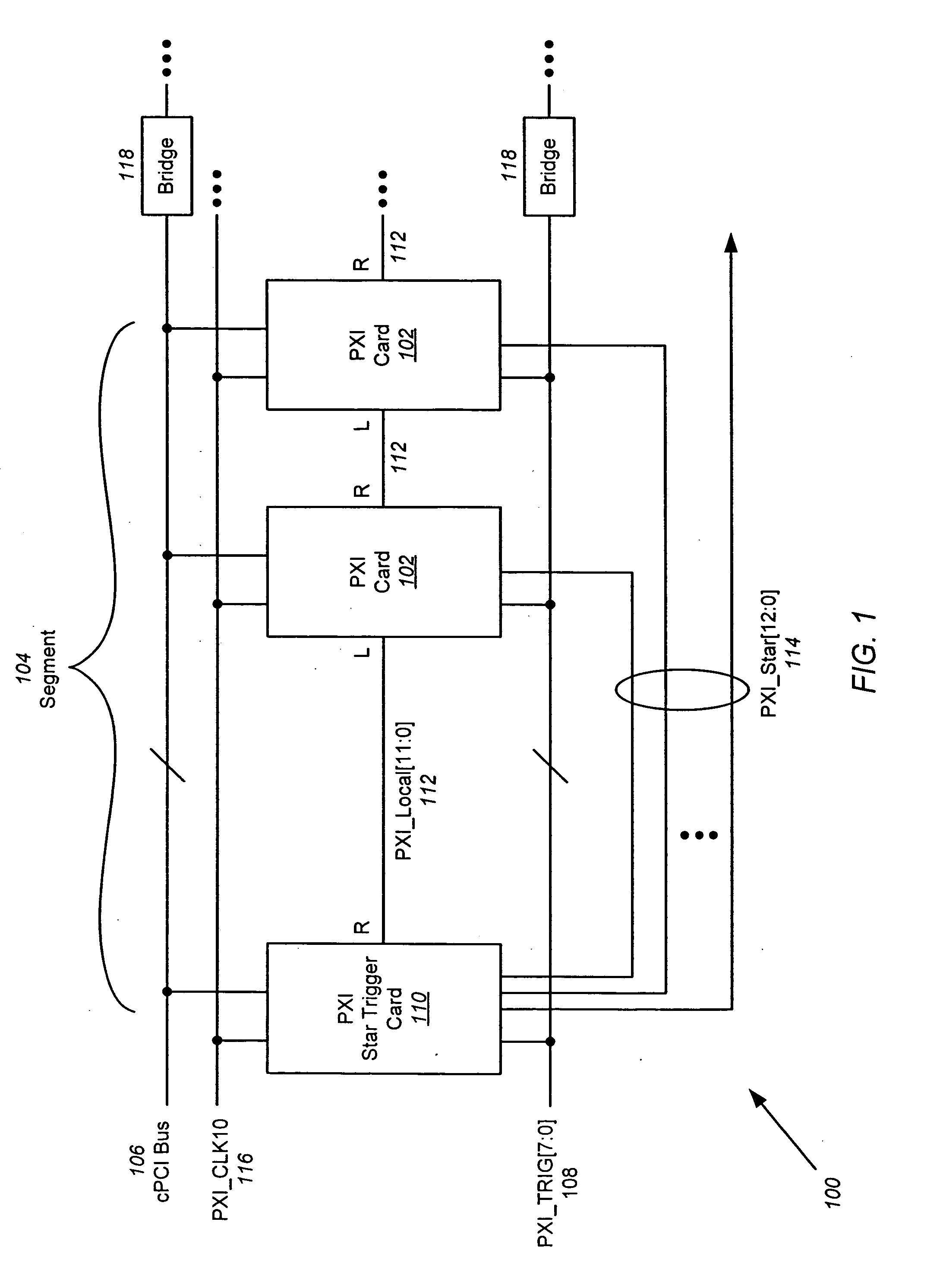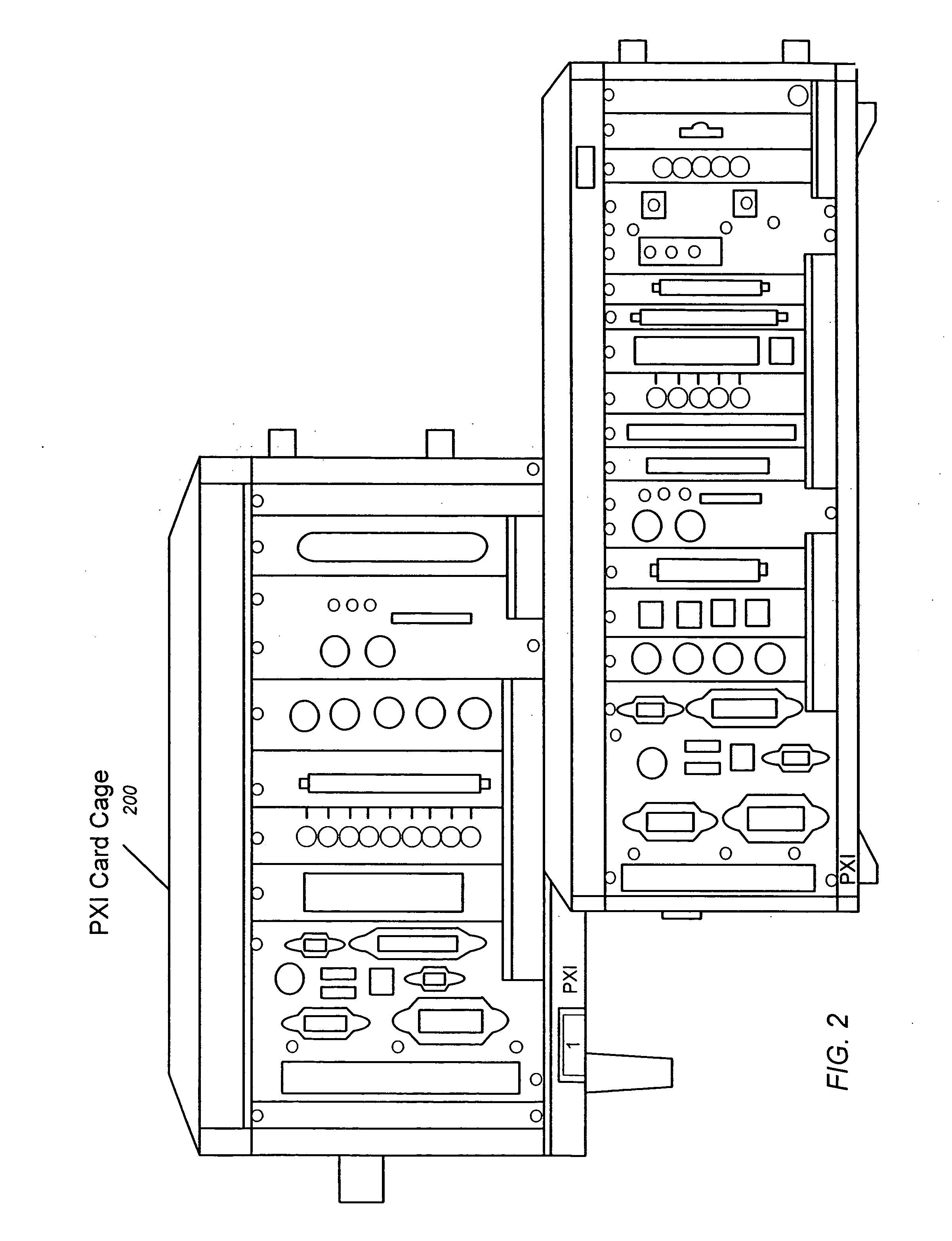Circuit card synchronization within a standardized test instrumentation chassis
a test instrument and circuit card technology, applied in the direction of instruments, digital transmission, generating/distributing signals, etc., can solve the problems of high cost of conventional state-of-the-art ate test systems, specialized and complex nature of ate test systems, and high cost of specialized hardware and software. , the development of specialized hardware and software is expensive and time-consuming and difficult to utiliz
- Summary
- Abstract
- Description
- Claims
- Application Information
AI Technical Summary
Benefits of technology
Problems solved by technology
Method used
Image
Examples
Embodiment Construction
[0039] In the following description of preferred embodiments, reference is made to the accompanying drawings which form a part hereof, and in which it is shown by way of illustration specific embodiments in which the invention may be practiced. It is to be understood that other embodiments may be utilized and structural changes may be made without departing from the scope of the preferred embodiments of the present invention.
[0040] In particular, it should be noted that although embodiments of the present invention are described herein for use with a PXI chassis for purposes of illustration and explanation, other standardized test instrumentation chassis having standardized specifications and specification-compliant ports and backplanes fall within the scope of the present invention. For example, cPCI is similar to PXI, but with a slightly different form factor and bus structure.
[0041] Embodiments of the present invention are directed to providing precise timing control within a t...
PUM
 Login to View More
Login to View More Abstract
Description
Claims
Application Information
 Login to View More
Login to View More - R&D
- Intellectual Property
- Life Sciences
- Materials
- Tech Scout
- Unparalleled Data Quality
- Higher Quality Content
- 60% Fewer Hallucinations
Browse by: Latest US Patents, China's latest patents, Technical Efficacy Thesaurus, Application Domain, Technology Topic, Popular Technical Reports.
© 2025 PatSnap. All rights reserved.Legal|Privacy policy|Modern Slavery Act Transparency Statement|Sitemap|About US| Contact US: help@patsnap.com



